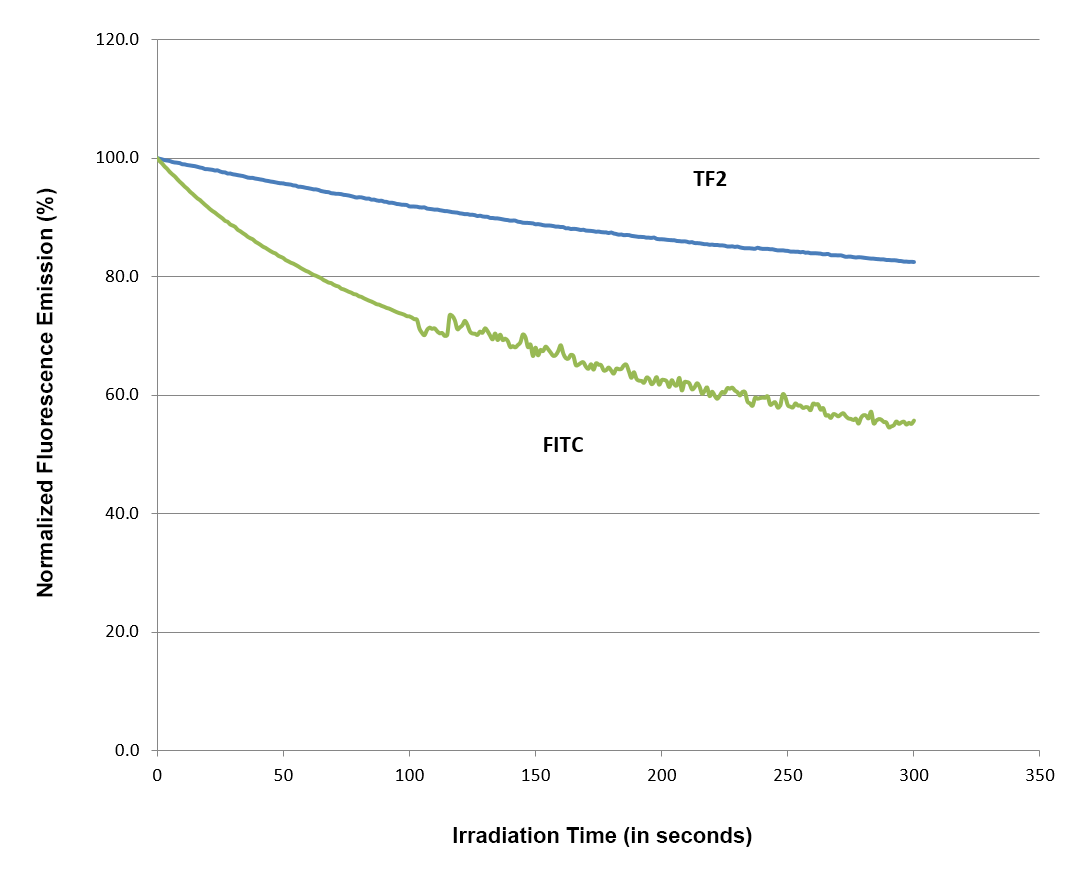Tide Fluor™ 2 acid
TF2 acid; Superior replacement for fluorescein
Tide Fluor™ 2 (TF2) family has the spectral properties similar to those of fluoresceins and Alexa Fluor® 488 (Alexa Fluor® is the trademark of Invitrogen). Compared to fluoresceins TF2 family has much stronger fluorescence and higher photostability. Additionally their fluorescence is pH-independent from pH 3 to 11. These characteristics make this new dye family a superior alternative to fluoresceins. TF2-labeled peptides and nucleotides exhibit much stronger fluorescence and higher photostability than the ones labeled with FITC or FAM. In pairing with our Tide Quencher™ 2 (TQ2), a variety of FRET peptides and nucleotides can be developed for detecting proteases and molecular beacons with enhanced sensitivity and stability. In addition, TF2 has spectral properties, pH dependence and photostability similar to Alexa Fluor® 488, making them excellent replacement for the expensive Alexa Fluor® 488.


| Catalog | Size | Price | Quantity |
|---|---|---|---|
| 2245 | 25 mg | Price |
Physical properties
| Molecular weight | 487.51 |
| Solvent | DMSO |
Spectral properties
| Correction factor (280 nm) | 0.09 |
| Extinction coefficient (cm -1 M -1) | 75000 |
| Excitation (nm) | 503 |
| Emission (nm) | 525 |
| Quantum yield | 0.9 1 |
Storage, safety and handling
| H-phrase | H303, H313, H333 |
| Hazard symbol | XN |
| Intended use | Research Use Only (RUO) |
| R-phrase | R20, R21, R22 |
| Storage | Freeze (< -15 °C); Minimize light exposure |
| UNSPSC | 12171501 |
Contact us
| Telephone | |
| Fax | |
| sales@aatbio.com | |
| International | See distributors |
| Bulk request | Inquire |
| Custom size | Inquire |
| Technical Support | Contact us |
| Request quotation | Request |
| Purchase order | Send to sales@aatbio.com |
| Shipping | Standard overnight for United States, inquire for international |
Page updated on January 8, 2026

